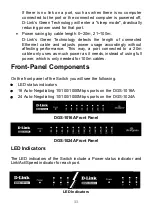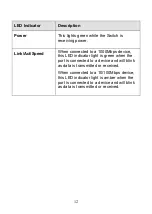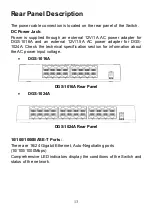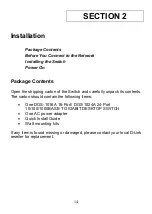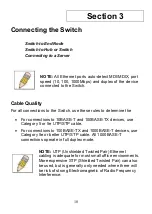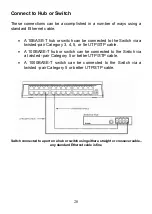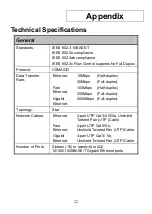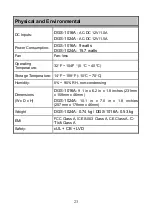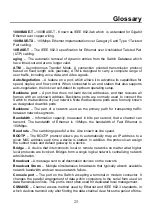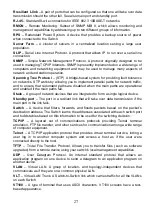
Glossary
1000BASE-T
–1000BASE-T - Known as IEEE 802.3ab which is a standard for Gigabit
Ethernet over copper wiring.
100BASE-TX
– 100Mbps Ethernet implementation over Category 5 and Type 1 Twisted
Pair cabling.
10BASE-T
– The IEEE 802.3 specification for Ethernet over Unshielded Twisted Pair
(UTP) cabling.
aging
– The automatic removal of dynamic entries from the Switch Database which
have timed-out and are no longer valid.
ATM
–
Asynchronous Transfer Mode. A connection oriented transmission protocol
based on fixed length cells (packets). ATM is designed to carry a complete range of
user traffic, including voice, data, and video signals.
Auto-Negotiation
– A feature on a port, which allows it to advertise its capabilities for
speed, duplex, and flow control. When connected to an end station that also supports
auto-negotiation, the link can self-detect its optimum operating setup.
Backbone port
–
A port that does not learn device addresses, and that receives all
frames with an unknown address. Backbone ports are normally used to connect the
Switch to the backbone of your network. Note that backbone ports were formerly known
as designated downlink ports.
Backbone
–
The part of a network used as the primary path for transporting traffic
between network segments.
Bandwidth
– Information capacity, measured in bits per second, that a channel can
transmit. The bandwidth of Ethernet is 10Mbps. the bandwidth of Fast Ethernet is
100Mbps.
Baud rate
– The switching speed of a line. Also known as
line speed
.
BOOTP
– The BOOTP protocol allows you to automatically map an IP address to a
given MAC address each time a device is started. In addition, the protocol can assign
the subnet mask and default gateway to a device.
Bridge
– A device that interconnects local or remote networks no matter what higher
level protocols are involved. Bridges form a single logical network, centralizing network
administration.
Broadcast
– A message sent to all destination devices on the network.
Broadcast Storm
– Multiple simultaneous broadcasts that typically absorb available
network bandwidth and can cause network failure.
Console port
– The port on the Switch accepting a terminal or modem connector. It
changes the parallel arrangement of data within computers to the serial form used on
data transmission links. This port is most often used for dedicated local management.
CSMA/CD
– Channel access method used by Ethernet and IEEE 802.3 standards, in
which devices transmit only after finding the data channel clear for some period of time.
25

